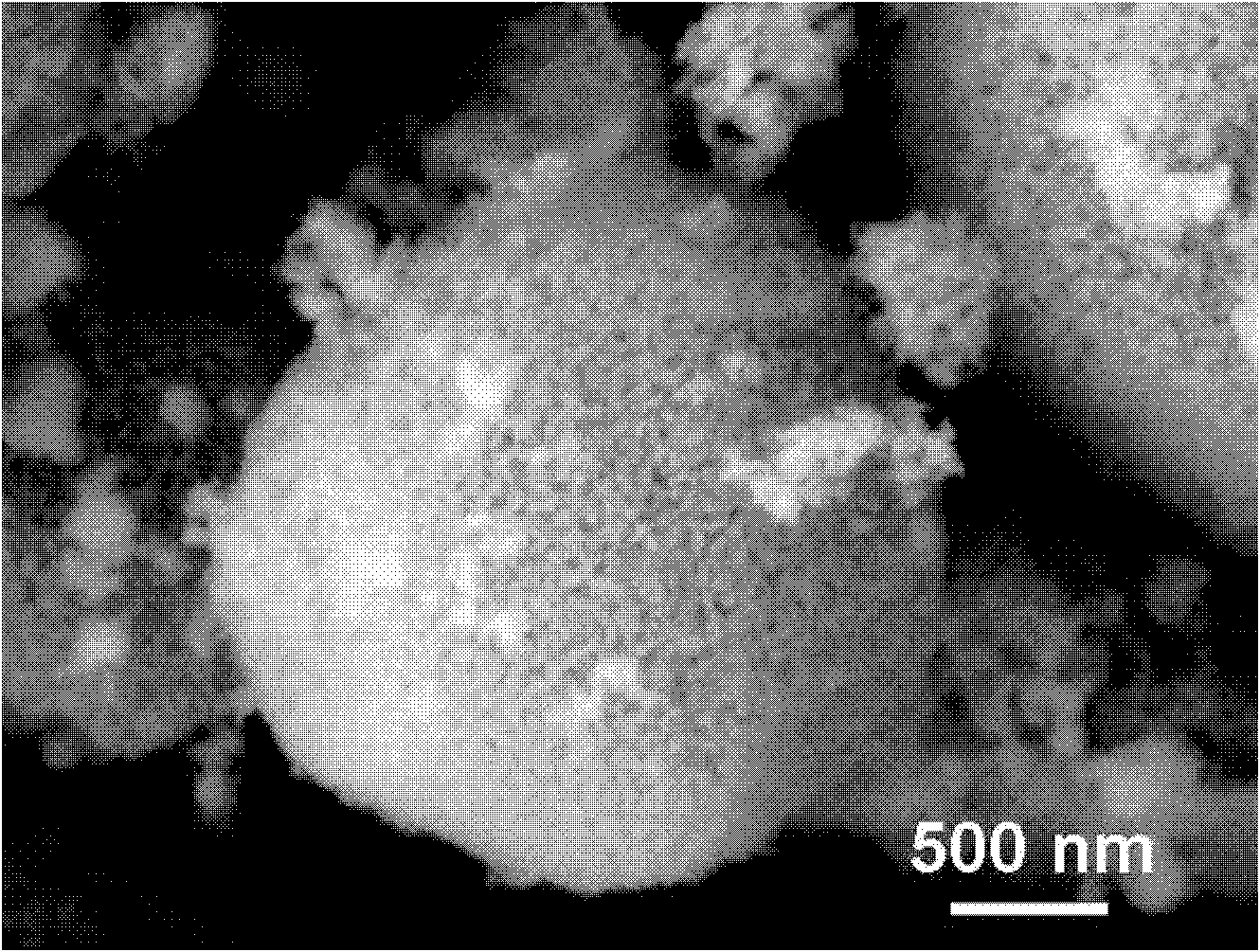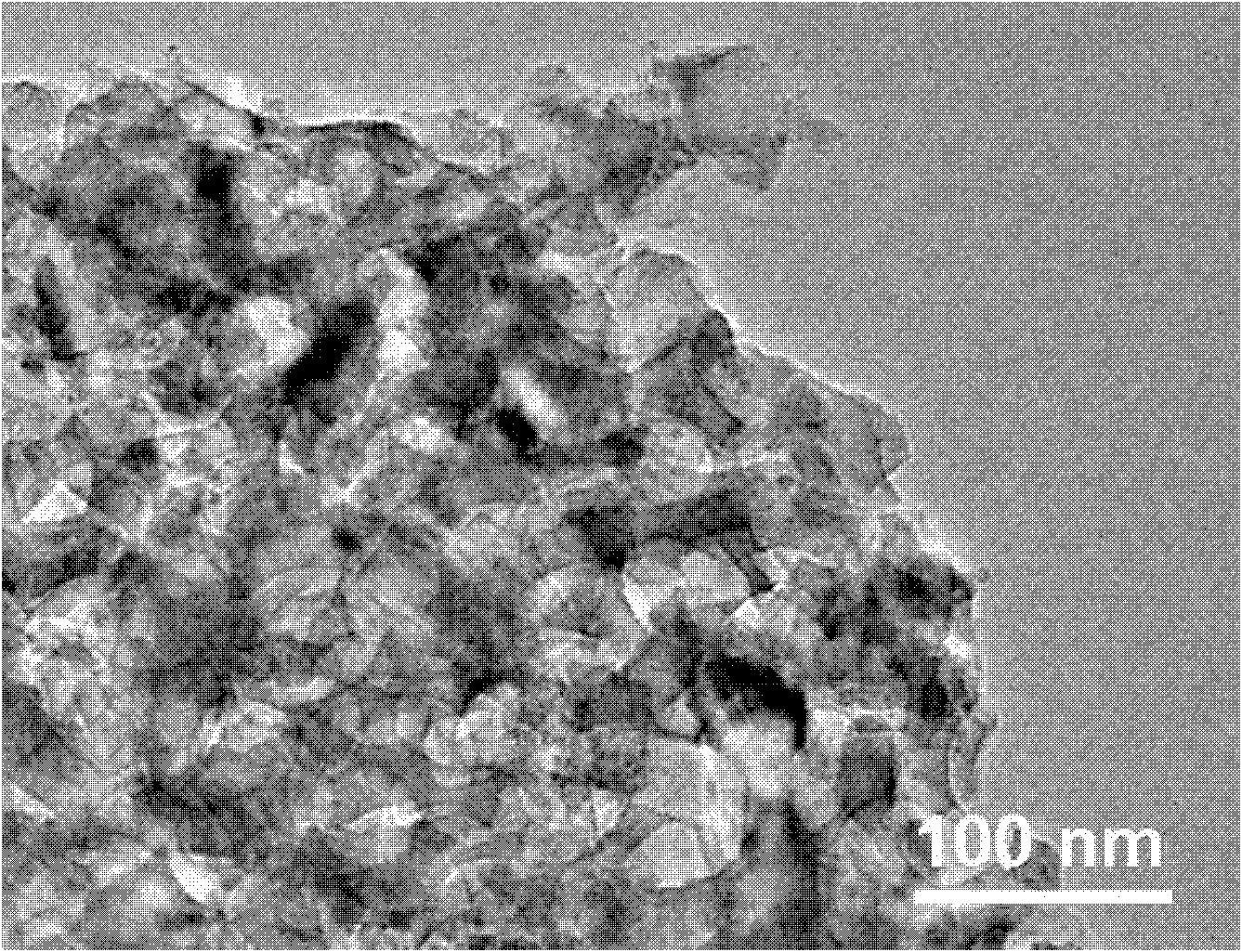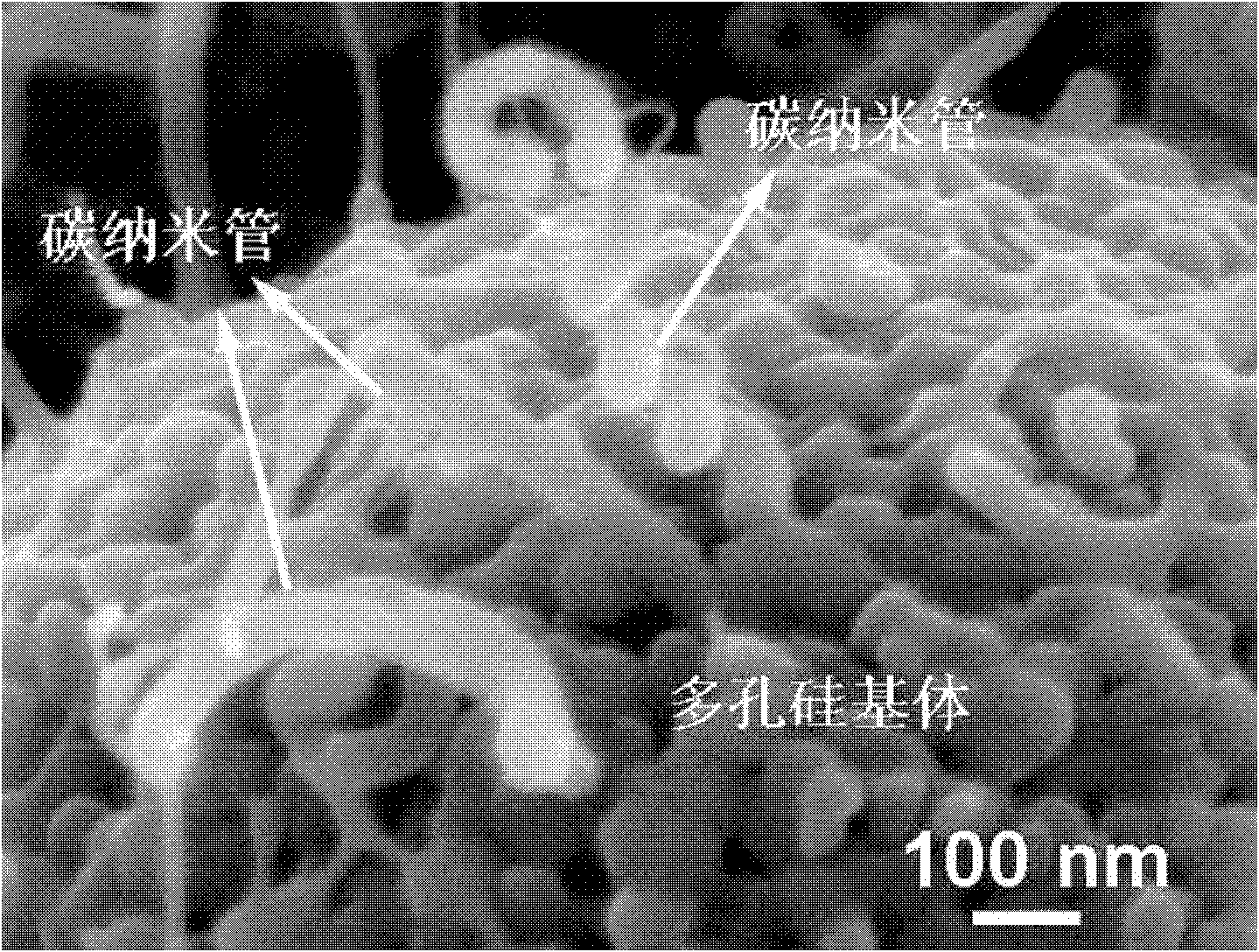Silicon carbon composite material and preparation method thereof
A technology of silicon-carbon composite materials and carbon nanomaterials, which is applied in the direction of electrical components, battery electrodes, circuits, etc., can solve the problems of low production efficiency, cumbersome preparation process, and cycle stability to be further improved, so as to reduce the preparation cost and buffer Volume effect, the effect of maintaining cycle stability
- Summary
- Abstract
- Description
- Claims
- Application Information
AI Technical Summary
Problems solved by technology
Method used
Image
Examples
Embodiment 1
[0042] Preparation of mesoporous silica: 2.0g ethylene oxide / propylene oxide block copolymer (Pluronic P123) was dissolved in a mixed solution of 15.0g water, 2.0g 1-butanol and 60.0g hydrochloric acid (2mol / L) After stirring evenly, add 4.2g tetraethyl orthosilicate (TEOS), then stir at 35°C for 24 hours, then transfer to a hydrothermal reaction kettle, keep the temperature at 100°C for 24 hours, and after cooling, centrifuge at 6000r / min, 100 °C, and then calcined at 550 °C for 2 hours in an air atmosphere to obtain mesoporous silica.
[0043] (1) Preparation of porous silicon matrix:
[0044] Put 0.35g of mesoporous silica and 0.35g of magnesium powder in a high-temperature furnace, raise the temperature to 650°C in argon, keep it warm for 7 hours, cool naturally, then place in 30ml of hydrochloric acid (2mol / L) and stir for 12 hours. After centrifugation at 6000r / min for 4 times, vacuum drying at 80°C for 12 hours to obtain a porous silicon matrix;
[0045] (2) Loaded ca...
Embodiment 2
[0052] Preparation of mesoporous silica: Dissolve 2.0g Pluronic P123 in a mixed solution of 15.0g water and 60.0g hydrochloric acid (2mol / L), stir evenly, add 4.2g TEOS, stir at 35°C for 24 hours, then transfer Put it into a hydrothermal reaction kettle, keep the temperature at 100°C for 24 hours, centrifuge at 5000r / min after cooling, dry at 90°C, and then calcinate at 650°C for 2 hours in an air atmosphere to obtain mesoporous silica.
[0053] (1) Preparation of porous silicon matrix:
[0054] Put 0.4g of mesoporous silica and 0.4g of magnesium powder in a high-temperature furnace, raise the temperature to 700°C in argon, keep it warm for 6 hours, cool it down naturally, then place it in 40ml of hydrochloric acid (2mol / L) and stir for 12 hours. After centrifugation at 5000r / min for 4 times, vacuum drying at 80°C for 12 hours to obtain a porous silicon matrix;
[0055] (2) Loaded catalyst precursor:
[0056] Disperse 0.35g of porous silicon matrix and 0.04g of ferric chlori...
Embodiment 3
[0062] Preparation of mesoporous silica: Dissolve 3.0g Pluronic P123 in a mixed solution of 22.5g water, 3.0g 1-butanol and 135.0g hydrochloric acid (2mol / L), stir well, add 9.5g TEOS, and then Stir for 24 hours, then transfer to a hydrothermal reaction kettle, keep the temperature at 100°C for 24 hours, centrifuge at 5000r / min after cooling, dry at 80°C, and then calcinate at 650°C for 2 hours in an air atmosphere to obtain mesoporous silica .
[0063] (1) Preparation of porous silicon matrix:
[0064] Put 0.25g of mesoporous silica and 0.25g of magnesium powder in a high-temperature furnace, raise the temperature to 750°C in argon, keep it warm for 6 hours, cool naturally, and then place it in 30ml of hydrochloric acid (2mol / L) and stir for 12 hours. After centrifugation at 5000r / min for 4 times, vacuum drying at 80°C for 12 hours to obtain a porous silicon matrix;
[0065] (2) Loaded catalyst precursor:
[0066] Disperse 0.2g of porous silicon matrix and 0.03g of cobalt ...
PUM
| Property | Measurement | Unit |
|---|---|---|
| particle diameter | aaaaa | aaaaa |
| pore size | aaaaa | aaaaa |
| diameter | aaaaa | aaaaa |
Abstract
Description
Claims
Application Information
 Login to View More
Login to View More - R&D
- Intellectual Property
- Life Sciences
- Materials
- Tech Scout
- Unparalleled Data Quality
- Higher Quality Content
- 60% Fewer Hallucinations
Browse by: Latest US Patents, China's latest patents, Technical Efficacy Thesaurus, Application Domain, Technology Topic, Popular Technical Reports.
© 2025 PatSnap. All rights reserved.Legal|Privacy policy|Modern Slavery Act Transparency Statement|Sitemap|About US| Contact US: help@patsnap.com



